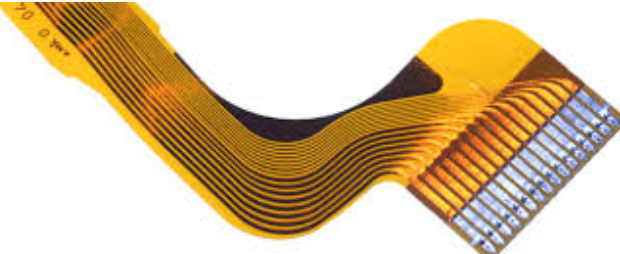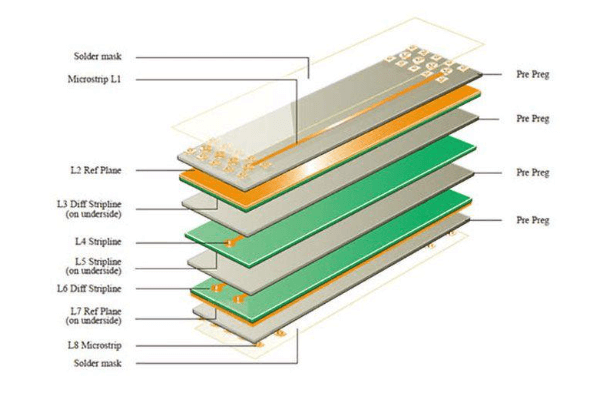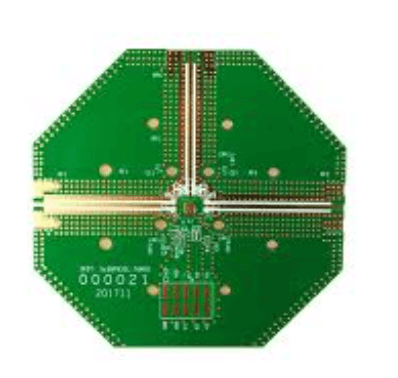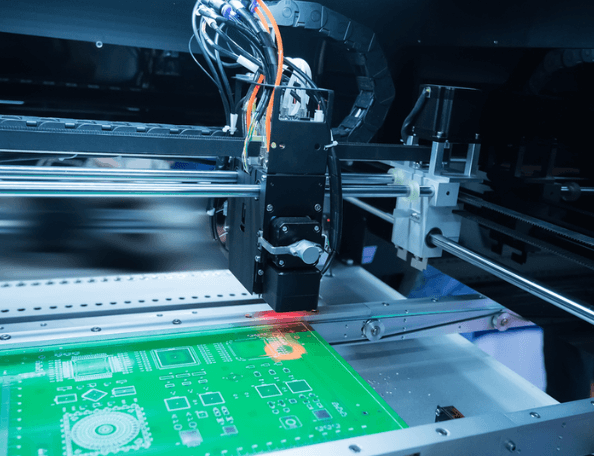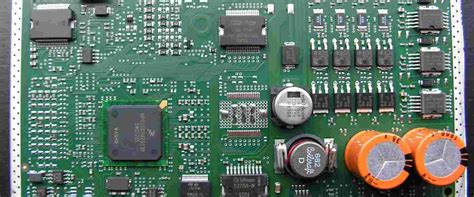Flex print pcb
Advantages Of Flex Print PCB In Modern Electronics
Flex print PCBs, or flexible printed circuit boards, have become increasingly integral to modern electronics due to their numerous advantages over traditional rigid PCBs. These benefits stem from their unique construction, which allows for greater versatility and efficiency in a wide range of applications. As the demand for more compact, lightweight, and reliable electronic devices continues to grow, the adoption of flex print PCBs is expected to rise correspondingly.
One of the primary advantages of flex print PCBs is their ability to conform to complex shapes and fit into tight spaces.
Unlike rigid PCBs, which are limited by their inflexible nature, flex print PCBs can be bent, folded, and twisted without compromising their functionality. This flexibility enables designers to create more innovative and compact electronic devices, as the circuits can be integrated into areas that would otherwise be inaccessible. Consequently, this leads to a reduction in the overall size and weight of the final product, which is particularly beneficial in industries such as aerospace, automotive, and consumer electronics.
In addition to their physical flexibility, flex print PCBs also offer enhanced durability and reliability.
The materials used in their construction, such as polyimide or polyester films, are highly resistant to environmental stressors like heat, moisture, and chemicals. This makes flex print PCBs well-suited for use in harsh environments where traditional rigid PCBs might fail. Furthermore, the reduced number of connectors and solder joints in flex print PCBs minimizes the risk of mechanical failure, as these components are often the weakest points in an electronic system. As a result, devices that utilize flex print PCBs tend to have longer lifespans and require less maintenance.
Another significant advantage of flex print PCBs is their potential for cost savings in both manufacturing and assembly processes.
The ability to integrate multiple components and interconnections into a single flexible substrate reduces the need for additional wiring and connectors, which can be both time-consuming and expensive to install. Moreover, the streamlined design of flex print PCBs often leads to a reduction in the number of parts required, further lowering production costs. Additionally, the lightweight nature of flex print PCBs can result in lower shipping and handling expenses, particularly for large-scale production runs.
The versatility of flex print PCBs also extends to their compatibility with a wide range of electronic components and technologies.
They can be used in conjunction with surface-mount devices (SMDs), through-hole components, and even advanced technologies like micro-electromechanical systems (MEMS) and optoelectronics. This adaptability makes flex print PCBs an attractive option for a diverse array of applications, from wearable devices and medical implants to industrial automation and telecommunications equipment.
Moreover, the environmental benefits of flex print PCBs should not be overlooked.
The reduced material usage and lower energy consumption during manufacturing contribute to a smaller ecological footprint compared to traditional rigid PCBs. Additionally, the longer lifespan and increased reliability of devices using flex print PCBs can lead to less electronic waste, further promoting sustainability in the electronics industry.
In conclusion, the advantages of flex print PCBs in modern electronics are manifold. Their flexibility, durability, cost-effectiveness, and compatibility with various components and technologies make them an indispensable asset in the development of cutting-edge electronic devices. As the industry continues to evolve and demand for more efficient and reliable solutions grows, the adoption of flex print PCBs is poised to play a crucial role in shaping the future of electronics.
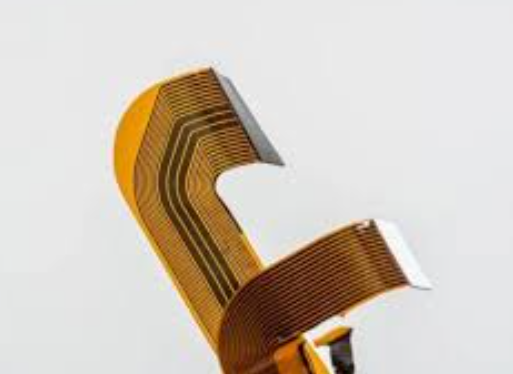
Design Tips For Creating Efficient Flex Print PCBs
Designing efficient flex print PCBs (Printed Circuit Boards) requires a meticulous approach to ensure optimal performance and reliability. Flex PCBs, known for their ability to bend and twist, are increasingly used in applications where space constraints and mechanical flexibility are paramount. To create an effective flex print PCB, several design tips should be considered, starting with material selection.
Choosing the right materials is crucial for the durability and functionality of a flex PCB.
Polyimide is a popular choice due to its excellent thermal stability and flexibility. It is essential to consider the thickness of the material, as it impacts the board’s flexibility and the minimum bend radius. Thinner materials offer greater flexibility but may compromise mechanical strength. Therefore, balancing these factors is key to achieving a robust design.
Next, the layout of the traces plays a significant role in the performance of a flex PCB.
It is advisable to use curved traces instead of sharp angles, as sharp bends can create stress points that may lead to cracking or failure over time. Additionally, maintaining uniform trace widths and spacing helps in reducing impedance variations and ensures signal integrity. When routing traces, it is beneficial to avoid placing them near the edges of the board, as this area is more susceptible to mechanical stress.
Another important consideration is the placement of components.
Strategically positioning components can minimize stress and enhance the board’s flexibility. Placing heavier components near the center of the board can reduce the strain on the flex areas. Furthermore, using surface-mount technology (SMT) components instead of through-hole components can help in maintaining a lower profile and reducing the overall weight of the PCB.
Thermal management is another critical aspect of flex PCB design.
Flex PCBs are often used in compact devices where heat dissipation can be a challenge. Incorporating thermal vias and heat sinks can help in managing heat effectively. Additionally, using materials with good thermal conductivity can aid in dissipating heat away from critical components, thereby enhancing the reliability of the PCB.
The choice of adhesives and coverlays also impacts the performance of a flex PCB.
Adhesives should be selected based on their ability to withstand the operating environment, including temperature and humidity conditions. Coverlays, which protect the circuitry, should be flexible and durable. Polyimide coverlays are commonly used due to their excellent thermal and mechanical properties.
Testing and validation are indispensable steps in the design process.
Conducting thorough simulations and stress tests can help identify potential failure points and areas for improvement. Flex PCBs should be tested for their ability to withstand repeated bending and flexing cycles, as well as their performance under various environmental conditions.
In conclusion, designing efficient flex print PCBs involves a careful balance of material selection, trace layout, component placement, thermal management, and protective measures. By adhering to these design tips, engineers can create flex PCBs that not only meet the functional requirements but also offer long-term reliability and performance. As technology continues to advance, the demand for flexible and compact electronic solutions will only grow, making the mastery of flex PCB design an invaluable skill for modern engineers.

Common Applications Of Flex Print PCB In Various Industries
Flex print PCBs, or flexible printed circuit boards, have become increasingly prevalent across various industries due to their unique properties and versatile applications. These flexible circuits are composed of a thin, flexible substrate that allows them to be bent, folded, and twisted without damaging the circuitry. This adaptability makes them an ideal choice for a wide range of applications, from consumer electronics to medical devices, automotive systems, and aerospace technology.
In the consumer electronics industry, flex print PCBs are commonly used in devices where space and weight are critical factors.
Smartphones, tablets, and wearable technology such as smartwatches and fitness trackers often incorporate flexible circuits to maximize space efficiency and reduce overall weight. The ability to conform to the contours of these compact devices allows for more innovative and ergonomic designs, enhancing user experience and device functionality. Additionally, the durability of flex print PCBs ensures that these devices can withstand the rigors of daily use, including bending and twisting.
Transitioning to the medical field, flex print PCBs play a crucial role in the development of advanced medical devices.
Their flexibility and reliability make them suitable for use in diagnostic equipment, such as portable ultrasound machines and wearable health monitors. These devices require precise and reliable circuitry to ensure accurate readings and patient safety. Furthermore, the biocompatibility of certain flexible substrates allows for their use in implantable medical devices, such as pacemakers and neurostimulators, where they must function reliably within the human body over extended periods.
In the automotive industry, the demand for lightweight and compact electronic systems has driven the adoption of flex print PCBs.
Modern vehicles are equipped with numerous electronic components, including advanced driver-assistance systems (ADAS), infotainment systems, and various sensors. Flexible circuits are used to connect these components efficiently, reducing the overall weight of the vehicle and improving fuel efficiency. Moreover, the ability of flex print PCBs to withstand harsh environmental conditions, such as extreme temperatures and vibrations, makes them ideal for automotive applications.
The aerospace industry also benefits significantly from the use of flex print PCBs.
Aircraft and spacecraft require highly reliable and lightweight electronic systems to ensure optimal performance and safety. Flexible circuits are used in a variety of applications, including communication systems, navigation equipment, and control panels. Their ability to maintain functionality under extreme conditions, such as high altitudes and rapid temperature changes, is crucial for aerospace applications. Additionally, the reduced weight of flex print PCBs contributes to overall fuel efficiency and payload capacity, which are critical factors in aerospace engineering.
In conclusion, the versatility and unique properties of flex print PCBs have led to their widespread adoption across multiple industries. From consumer electronics to medical devices, automotive systems, and aerospace technology, flexible circuits provide numerous advantages, including space efficiency, durability, and reliability. As technology continues to advance, the demand for innovative and adaptable electronic solutions will likely drive further developments in flex print PCB technology, expanding their applications and enhancing their performance in various fields.
Innovations And Future Trends In Flex Print PCB Technology
Flex print PCB technology has undergone significant advancements in recent years, driven by the increasing demand for more compact, lightweight, and flexible electronic devices. This technology, which involves the use of flexible substrates to create printed circuit boards, offers numerous advantages over traditional rigid PCBs, including enhanced durability, improved performance, and greater design flexibility. As a result, it has found applications in a wide range of industries, from consumer electronics to automotive and medical devices.
One of the most notable innovations in flex print PCB technology is the development of advanced materials that offer superior flexibility and reliability.
These materials, such as polyimide and polyester films, provide excellent thermal stability and mechanical strength, making them ideal for use in high-performance applications. Additionally, the use of advanced adhesives and conductive inks has further improved the performance and reliability of flex print PCBs, enabling them to withstand harsh environmental conditions and prolonged use.
Another significant trend in flex print PCB technology is the increasing integration of advanced manufacturing techniques, such as additive manufacturing and laser direct structuring.
These techniques allow for the creation of highly complex and intricate circuit designs that would be difficult or impossible to achieve with traditional manufacturing methods. For example, additive manufacturing enables the precise deposition of conductive materials onto flexible substrates, allowing for the creation of multi-layered and three-dimensional circuit structures. Similarly, laser direct structuring allows for the rapid and precise patterning of conductive traces on flexible substrates, enabling the creation of highly miniaturized and densely packed circuit designs.
The growing adoption of flex print PCB technology in the automotive industry is another key trend that is driving innovation in this field.
As vehicles become increasingly connected and autonomous, there is a growing need for lightweight, flexible, and reliable electronic systems that can withstand the harsh conditions of the automotive environment.
Flex print PCBs offer an ideal solution, as they can be easily integrated into the complex and confined spaces of modern vehicles, while also providing the necessary durability and performance. Furthermore, the use of flex print PCBs in automotive applications can help to reduce the overall weight of the vehicle, leading to improved fuel efficiency and reduced emissions.
In the medical field, flex print PCB technology is enabling the development of a new generation of wearable and implantable devices that offer improved patient monitoring and treatment. These devices, which include everything from smartwatches and fitness trackers to advanced medical implants, rely on the flexibility and reliability of flex print PCBs to provide accurate and continuous monitoring of vital signs and other health metrics. Additionally, the use of biocompatible materials in flex print PCBs ensures that these devices can be safely used in direct contact with the human body, further expanding their potential applications.
Looking ahead, the future of flex print PCB technology is likely to be shaped by ongoing advancements in materials science, manufacturing techniques, and application-specific requirements. For instance, the development of new conductive materials, such as graphene and other nanomaterials, could further enhance the performance and capabilities of flex print PCBs.
Similarly, the continued refinement of additive manufacturing and laser direct structuring techniques is expected to enable even greater design flexibility and miniaturization. As these and other innovations continue to emerge, flex print PCB technology is poised to play an increasingly important role in the development of next-generation electronic devices and systems.

